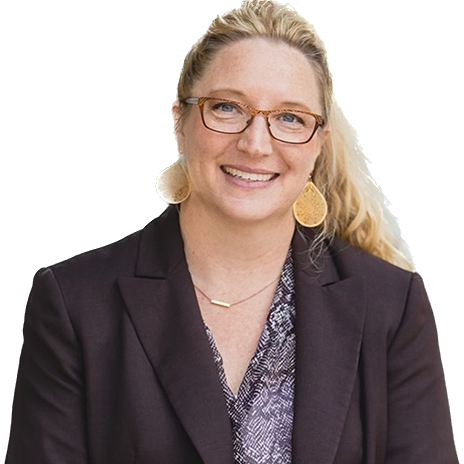If you’re preparing to start or grow your business coaching practice, I want you to think deeply about one of the most important concepts in the business of business coaching: the Effective Billable Rate, or EBR for short.
From an earning perspective, the EBR is the million-dollar difference between consulting and true business coaching. Many new business coaches confuse business coaching with business consulting, but they’re not the same–and believe me, business coaching is the far better gig. In general, consultants base their work on hourly rates and deliverables, not on value, and definitely not on results. A coach, on the other hand, is a valued teacher, mentor, motivator, and educator, and is paid based on value and results. Keep this perspective in mind as we head into this conversation about the effective billable rate.
Business Coaching Is a Top-Earning Profession
Business coaching is not based on an hourly rate. You should set up your contracts so that you get paid a monthly retainer to deliver results. Even still, you should pay attention to your effective billable rate to help you keep track of how efficiently you’re operating your business.
The typical business coach has anywhere from 10 clients to 15 clients at a time, depending on the experience level, each of whom is investing anywhere from $1,000 to $3,000 per month. In return, the coach typically spends 30-60 minutes coaching each client per week. In revenue terms, that’s $10,000 to $45,000 per month in cash flow for 5 to 15 hours of client-facing work each week. At the high end, that’s $750 per hour.
This puts business coaching at the very top of the list for top-earning professionals. Compare that sort of revenue to anesthesiologists, surgeons, chief executives, engineers, attorneys, and so on. Business coaching leaves other professions in the dust–and that’s especially true because you get to keep the profits. You don’t have to share them with a medical practice, engineering firm, or law firm. You don’t have to pay back exorbitant student debt. You can work from the comfort of your home office.
You’ll never generate that kind of income as a consultant because consulting involves providing deliverables based on an hourly rate, no matter how specialized you become. That’s because, as a coach, you’re not trading your time for their money. You’re trading your knowledge for their money––and as long as they get the value and results they expect and need and deserve, it’s a win/win. By the way, this is the beauty of business coaching and I hope you’re pretty pumped about it.
As a coach, you’re not trading your time for their money. You’re trading your knowledge for their money––and as long as they get the value and results they expect and need and deserve, it’s a win/win.
Having said all that, setting up your coaching programs to maintain a high effective billable rate can be a bit tougher than it sounds and takes some careful planning and analysis.
Expected Billable Rate vs. Effective Billable Rate
First, understand the difference between your expected billable rate and your effective billable rate. The expected billable rate is the amount per hour that you receive for actual coaching time (as in our example above of $750/hour). Of course, the time you spend in coaching sessions is only part of the equation. Thus, you should calculate your effective billable rate as the actual, real rate you’re making per hour based on actual, real time you’re investing in your clients when you include all the other things you do to service them.
Let’s say you have a one-on-one coaching client who pays you $1,000 every month for 30 minutes of coaching per week. Your expected billable rate is $465. Great, right? Not so fast. Let’s say you add up the time associated with all the rookie inefficiencies and wasteful habits I see coaches making all the time: extra-long emails about things that should be handled on coaching calls, unplanned bonus phone calls, extra-long coaching sessions that are more educational and teaching in nature because you don’t have a membership site, inefficient billing and collecting practices, and, God forbid, even driving time to see your clients (which you should NEVER do in this age of Zoom or video conferencing!). Do all this, and you can easily add a whole additional hour per week!
Now you’ve got $1,000 divided by 6.45 hours per month—and all of a sudden you’ve gone from $465 per hour to $155 an hour, or about a third of your expected billable rate! That’s decent, but you’re no longer in the top-tier of income-earning professionals. On top of that, you’re spending more time than you need on inefficient client services, and you’re behaving more like a consultant than a coach.
How to Improve Your EBR
Your goal should be to stay in the $250-$500/hour range for your effective billable rate. Here’s how to improve your efficiency:
- Never answer an email that requires more than a paragraph or stay on the phone for more than a minute or two with an unexpected call. If it’s going to require more, defer and say, “Hey, we’re gonna have to do this in our next coaching session.”
- Always bill upfront. You shouldn’t be chasing money. Payments are collected the day your contract is signed, and are for the coming month–NOT the previous one.
- Use automated billing. Make a decision that you simply don’t accept checks or other forms of payment that must be handled manually, but instead automate the process so that the retainer is deducted automatically from their credit card or bank account.
- Have a membership site. Have all the basic content you teach your clients in a membership site (like the one we have at the Coaches’ Coach), and assign clients the learning materials they need to study in advance of your coaching session. That way, you’re not spending your time teaching concepts, but coaching them on the implementation of the concepts they’ve already learned. Do this, and you can keep your calls to just 30-45 minutes!
- Never drive to weekly coaching meetings. It’s such an extraordinary waste of time and you don’t need to do it in an age where you can use technologies like Zoom to enjoy verbal, vocal, and visual interaction with your client. The only possible exception to this rule is if you’re holding a day-long training session with your client’s team. Even then, you can accomplish that virtually as well.
Want to build a business coaching practice with an EBR so high it’d make doctors and lawyers blush? Download our FREE ebook, How to Become a Business Coach, to get your business started.





